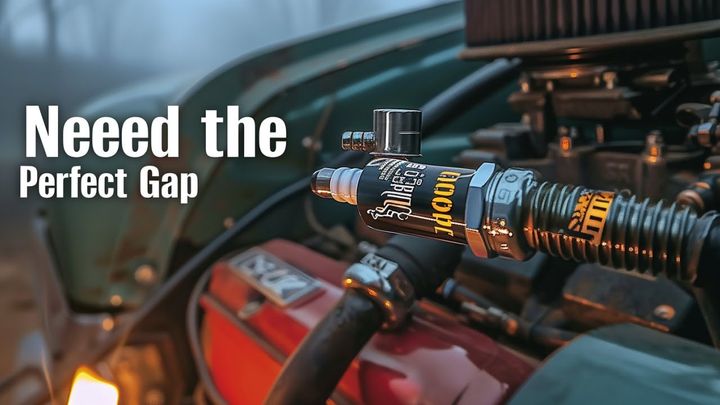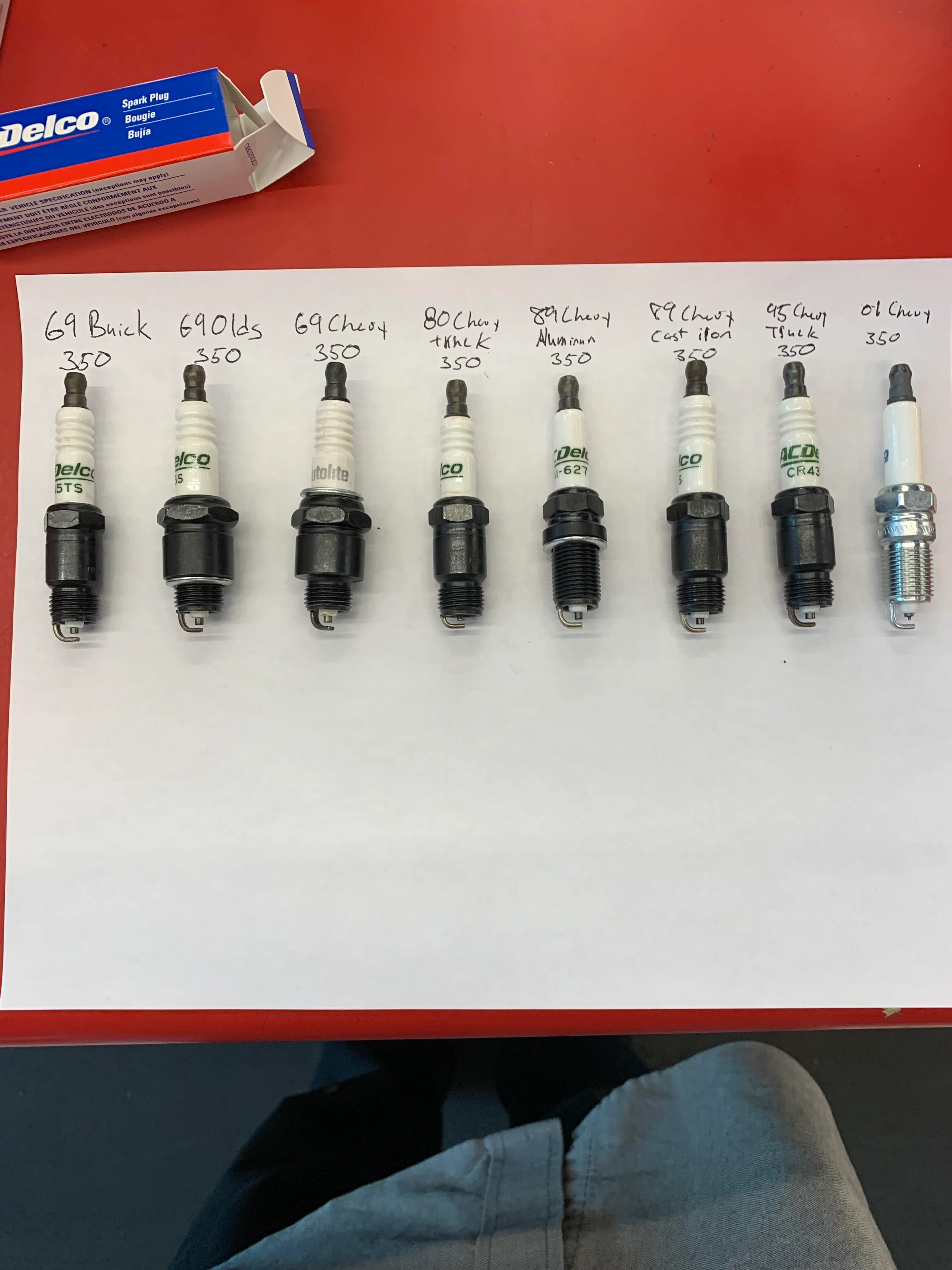


The spark plug gap is a critical factor in the performance and efficiency of your Chevy 350 engine. A properly set gap ensures reliable ignition, optimal combustion, and maximum power output. In this comprehensive guide, we'll explore the importance of spark plug gap, its impact on engine operation, and the recommended specifications for Chevy 350 engines with both points and HEI ignition systems. Additionally, we'll walk you through the process of measuring and adjusting the gap, selecting the right spark plugs, and maintaining optimal performance over time.

The spark plug gap refers to the distance between the center and ground electrodes of a spark plug. This gap must be precisely set to ensure the ignition system can deliver a strong, reliable spark to ignite the air-fuel mixture in the combustion chambers. The size of the gap directly influences several key aspects of engine performance:
| Aspect | Impact |
|---|---|
| Voltage requirement | A larger gap requires higher voltage to jump, while a smaller gap needs less voltage. |
| Spark intensity | A wider gap allows for a more intense spark, which can better ignite lean mixtures and promote complete combustion. |
| Spark duration | A larger gap results in a longer spark duration, providing more time for the air-fuel mixture to ignite. |
Setting the gap too wide or too narrow can lead to various engine issues, such as:
Misfires
Poor fuel economy
Increased emissions
Rough running
Premature wear of ignition components
To achieve optimal performance, it's crucial to set the spark plug gap according to the manufacturer's specifications and your engine's unique requirements.
The recommended spark plug gap for Chevy 350 engines depends on the ignition system:
| Ignition System | Gap Specification |
|---|---|
| Points | 0.035" |
| HEI (High Energy Ignition) | 0.045" |
These specifications serve as a starting point, but the optimal gap may vary based on factors such as:
Compression ratio
Camshaft profile
Fuel type
High-performance Chevy 350 builds often utilize gap settings ranging from 0.035" to 0.060", depending on the specific combination of components and the engine's state of tune. It's advisable to begin with the factory-recommended gap and make incremental adjustments based on the engine's performance and response.
To ensure your Chevy 350 is running at its best, it's essential to measure and adjust the spark plug gap to the correct specification. Here's a step-by-step guide:
Tools needed:
Feeler gauges
Spark plug gap tool
Procedure:
Remove the spark plug from the engine and clean any debris from the electrodes.
Using a feeler gauge, measure the gap between the center and ground electrodes. The gauge should fit snugly without forcing it.
If the gap is incorrect, use a spark plug gap tool to adjust it. Place the ground electrode in the tool's gap adjustment slot and gently bend it until the desired gap is achieved.
Double-check the gap with the feeler gauge to ensure accuracy.
Repeat the process for all spark plugs, maintaining consistent gap across all cylinders.
When adjusting the gap, apply minimal pressure to avoid damaging the electrodes or cracking the spark plug's insulator. If you're unsure about the process, consult a professional mechanic or refer to your vehicle's service manual for specific instructions.
Choosing the appropriate spark plugs for your Chevy 350 is vital for optimizing performance and longevity. Consider the following factors when making your selection:
| Factor | Description |
|---|---|
| Heat range | Refers to the spark plug's ability to dissipate heat from the combustion chamber. Colder plugs are ideal for high-performance applications, while hotter plugs suit stock or low-performance engines. |
| Thread size and reach | Ensure the spark plugs have the correct thread size (14mm or 18mm) and reach (length of the threaded portion) for your specific cylinder head. |
| Electrode material | Copper core plugs offer excellent heat transfer, while platinum and iridium electrodes provide enhanced durability and longer service life. |
When choosing spark plugs, match the gap to your engine's specific requirements. Some high-performance spark plugs come pre-gapped, but always verify the gap and adjust if necessary.
As spark plugs age, the gap can increase due to electrode wear, resulting in reduced ignition efficiency and performance. Regular inspection and replacement of spark plugs are crucial for maintaining optimal engine operation.
Recommended service intervals:
Stock Chevy 350: 30,000 miles
High-Performance Chevy 350: 15,000 miles
During inspections, look for signs of wear, damage, or abnormal deposits. Replace spark plugs if the electrodes are worn or the insulator is cracked. If the plugs are in good condition but the gap has widened, adjust it back to the correct specification using a gap tool.
In some cases, replacing the spark plugs may be more cost-effective than adjusting the gap on used plugs, especially if they are approaching the end of their service life or if you're upgrading to high-performance plugs.
If your Chevy 350 engine experiences problems like misfires, poor acceleration, or rough idle, incorrect spark plug gap could be the culprit. Follow these steps to troubleshoot:
Remove and inspect the spark plugs for wear, damage, or abnormal deposits. Replace fouled or damaged plugs with new ones.
Check the gap on each spark plug using a feeler gauge. Adjust to the proper specification if needed.
Use a timing light to verify spark consistency across all cylinders. Inconsistent firing may indicate issues with the ignition system or mechanical problems.
If adjusting the gap and replacing the plugs doesn't resolve the issue, further diagnose the ignition system and engine components, such as the distributor cap, rotor, ignition wires, coil, vacuum leaks, or low compression.
Systematic troubleshooting and addressing underlying problems will help restore your Chevy 350's performance and reliability.
Setting the correct spark plug gap is vital for optimizing the performance, efficiency, and longevity of your Chevy 350 engine. By understanding the importance of gap size, selecting the right spark plugs, and performing regular maintenance and inspections, you can ensure reliable ignition, maximum power output, and smooth operation.
Adhere to the manufacturer's recommended service intervals and use high-quality spark plugs designed for your specific application. If you encounter engine performance issues, promptly troubleshoot the spark plug gap and other ignition system components.
Investing time in setting and maintaining the correct spark plug gap will reward you with improved throttle response, better fuel economy, reduced emissions, and a longer engine life. Whether you have a stock Chevy 350 or a high-performance build, paying attention to this critical aspect of engine tuning will help you extract the most from your iconic V8 powerplant.
The spark plug gap is the distance between the center and ground electrodes, which affects the voltage required for the spark to jump and ignite the air-fuel mixture in the combustion chamber. Proper gap setting ensures efficient combustion and optimal engine performance.
The spark plug gap influences the intensity and duration of the spark, which impacts the engine's ability to ignite lean mixtures, achieve complete combustion, and generate maximum power output. An incorrect gap can lead to misfires, poor fuel economy, increased emissions, and rough running.
For a Chevy 350 engine equipped with a points-style ignition system, the recommended spark plug gap is typically 0.035". This gap setting ensures reliable ignition and optimal performance for this specific configuration.
When running an HEI (High Energy Ignition) system on a Chevy 350, the recommended spark plug gap is usually 0.045". This increased gap takes advantage of the higher voltage output provided by the HEI system, promoting a stronger spark and improved combustion efficiency.
Yes, high-performance Chevy 350 engines often utilize wider spark plug gaps, ranging from 0.035" to 0.060", depending on the specific combination of components and the engine's state of tune. However, it's essential to start with the factory-recommended gap and make incremental adjustments based on the engine's performance and response.
To measure and adjust the spark plug gap, you'll need a set of feeler gauges and a spark plug gap tool. Feeler gauges are used to measure the existing gap, while the gap tool is used to adjust the ground electrode to achieve the desired gap setting.
For a stock Chevy 350, it's recommended to inspect and replace spark plugs every 30,000 miles. High-performance Chevy 350 engines may require more frequent service intervals, typically around 15,000 miles. Regular inspections and timely replacements ensure optimal engine performance and longevity.
During spark plug inspections, check for signs of wear, damage, or abnormal deposits on the electrodes and insulator. If the electrodes are worn, the insulator is cracked, or there are excessive deposits, replace the spark plugs with new ones. If the plugs are in good condition but the gap has widened, adjust it back to the correct specification using a gap tool.
Incorrect spark plug gap can cause various engine performance issues, such as misfires, poor acceleration, rough idle, reduced fuel efficiency, and increased emissions. If you experience any of these symptoms, it's worth checking and adjusting the spark plug gap to ensure it meets the recommended specifications for your engine.
If adjusting the spark plug gap and replacing the plugs doesn't improve your Chevy 350's performance, it's essential to further diagnose the ignition system and engine components. This may involve checking the distributor cap, rotor, ignition wires, coil, vacuum leaks, or compression. Systematic troubleshooting and addressing any underlying problems will help restore your engine's performance and reliability.

Miguel started tinkering with car radios as a teenager, fascinated by the intricate dance of wires and circuits. This passion led him to pursue a career as an automotive electrician. For the past 10 years, Miguel has tackled everything from flickering headlights to mysterious electrical gremlins. He thrives on troubleshooting electrical problems and enjoys sharing his knowledge to empower car owners to understand their vehicles better.



